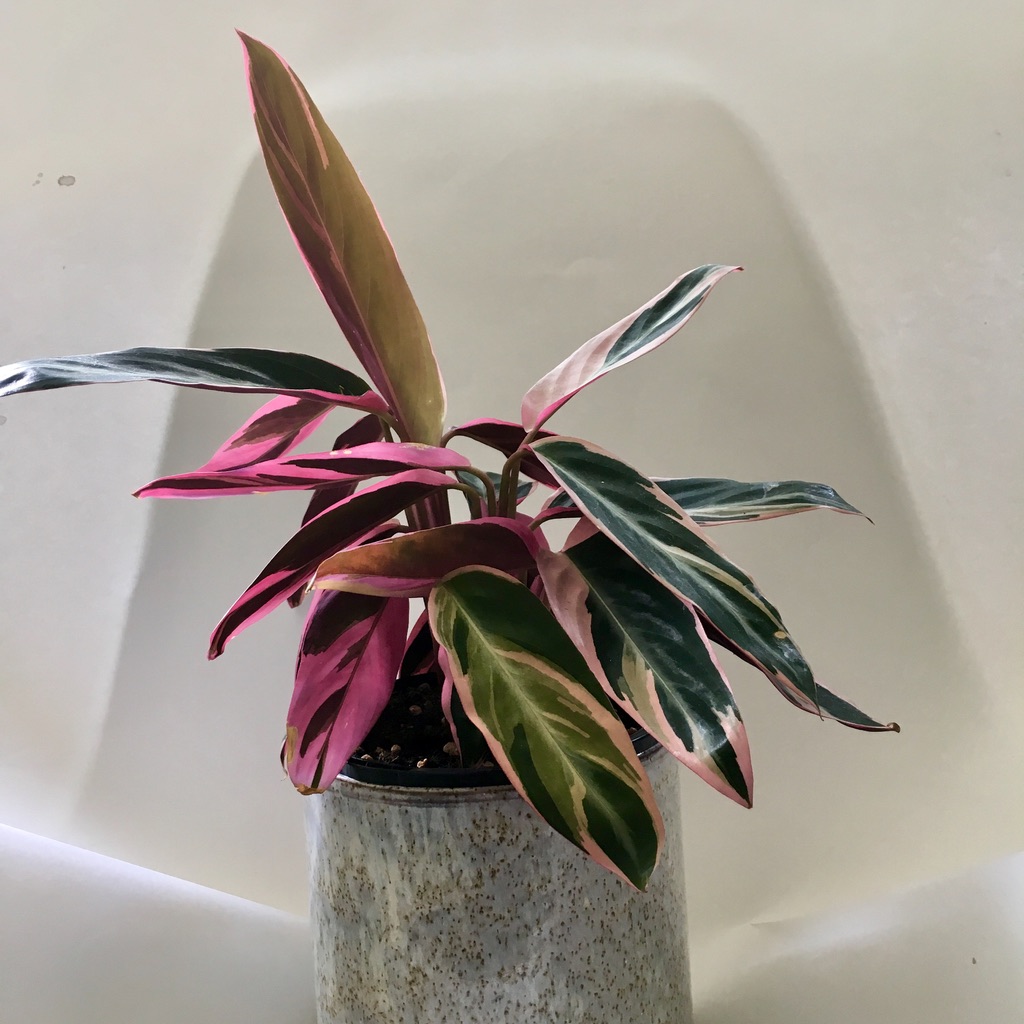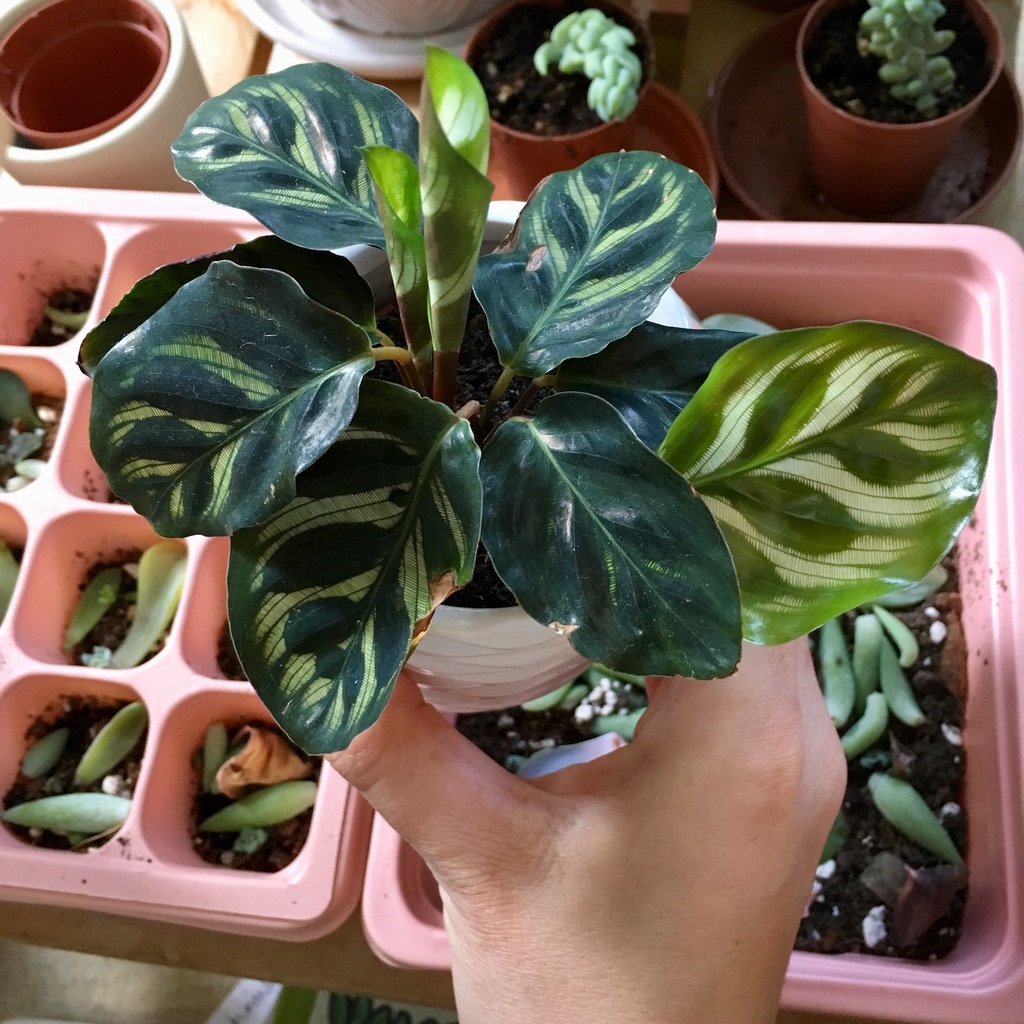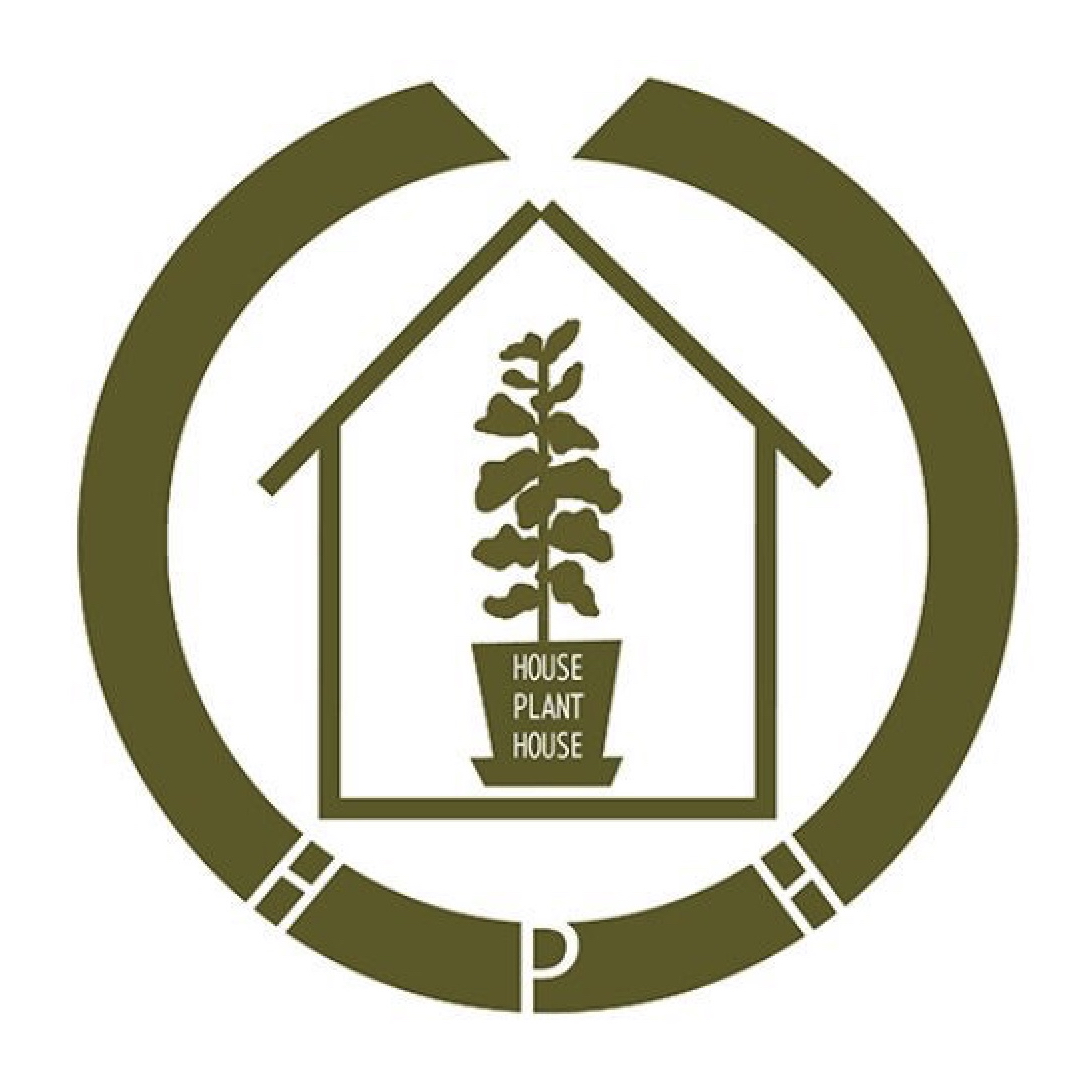I have had my Stromanthe sanguinea triostar for a few years now, and it’s one of those plants that has really blossomed into something of a statement piece in my houseplant collection. As part of the Marantaceae family it is definitely the easier-going relative in my experience, and I often get questions about how to keep its leaves looking lovely. This plant gang which includes maranta, ctenanthe, calathea and stromanthe have a tendency to show their unhappiness through marks on their foliage.
This question of brown tips on houseplants is a fairly common one, and in this post I wanted to share some quick tips on how to ‘read’ what could be causing your plant to show signs of stress in this way. This post will help if you have any plant with brown edges (not just on a Stromanthe), I wanted to mention this one as a way of introducing the issue as it’s a common complaint of this particular family. I’d recommend reading this post in conjunction with Why are my leaves turning yellow? if you are having any other leaf related problems.
There’s no avoiding the fact that brown tips or edges can look a little unsightly and detract from the overall appearance of your plant. The foliage of the Marantacae family has a tendency to be quite thin and ‘paper-y’; not thick and waxy like Monstera or Ficus leaves for example. Basically, the plant is struggling in some way and it’s often associated with an under-watering issue. There are a few reasons that can cause this, so try to determine what could be causing the issue from the points below.

◊ UNDERWATERING
The easiest issue is to do with frequency; if none of the following reasons seem applicable, your plant just needs more water than you are currently giving it. So increase watering and monitor, easy! I have found adding in a self watering spike to my Stomanthe really helpful in addition to regular watering, or sitting on a tray of pebbles is a handy tip too. Just water the tray and the plant can soak up any extra water it needs. You want to avoid the plant getting very dry for any length of time.
◊ PLANT NEEDS REPOTTING
If your plant has been growing new leaves and doing well above the surface, it will also have been growing roots and that means that it could very well need repotting. If the plant is root-bound or stressed in some way, watering will be a lot less effective as the roots are constricted. Repot the plant into a slightly bigger pot and loosen the roots well when potting on (don’t skip this step!)
◊ DRY AIR / LOW HUMIDITY
Over winter in particular, our homes can be quite dry environments; central heating is hell for houseplants! So make sure your plants aren’t placed in close proximity to radiators or open windows, they really won’t like it and this can cause the edges of your foliage plants to crisp up and brown. Be aware of this with plants such as palms in particular and those with ‘thinner’ leaves such as the Marantaceae family. I like to huddle my plants together which can increase humidity, or the use of a humidifier can be beneficial (not all homes are suited to this though). I also like to give my foliage plants a shower every few weeks to keep the leaves free from dust.

◊ROOTS ARE DAMAGED
If your plant has been in the same pot for a while, the soil around the roots can sometimes get quite compacted. In this situation, I will do a soil ‘refresh’ by discarding the current potting mix, washing the roots and repotting in fresh compost before watering. Inconsistent watering can definitely exacerbate this issue – in particular leaving the plant to get quite dry, followed by a heavy watering and ‘flooding’ the pot. This can cause damage to the roots and prevent them from adequately taking up enough water. In this case I would remove any dead or damaged roots and cut the plant back a bit to allow it to recuperate.
◊ OVERFERTILISING
If you have been regularly fertilising your plant over the growing season, or there is a build up of salts in the soil, this can often cause brown tips. A way to resolve this issue is to increase watering for a while to flush out the salt build up (and it might sound obvious but make sure there are holes in the bottom of the pot!)

◊ POTTING MIX TOO HEAVY
The soil might not suit the plant so be sure to consider this when potting (I’ve got a post coming soon about soil mixes – thank you readers for the request!) If the potting mix is too heavy there might not be enough aeration for the roots, which will put them under stress and this can result in brown tips.
OTHER THINGS TO CONSIDER:
◊ STRAW COLOURED PATCHES
This can be caused by watering with water that is too cold; tepid – room temperature water is better! If the water is very cold this can shock the plant, revealing itself as dry straw coloured patches on the leaves (not necessarily at the tips – but something to be mindful of).
◊ A NOTE ON TERRACOTTA POTS
If you use terracotta pots for some of your plants, be aware that you will need to treat these plants differently to those in other types of pots, as they can soak up water. They can be great for cacti and succulents, however I don’t often like to pot my leafy plants in them as I often find myself under-watering them.

To summarise, the main causes of brown tips on your plants are:
UNDERWATERING
PLANT NEEDS REPOTTING
DRY AIR / LOW HUMIDITY
ROOTS ARE DAMAGED
OVERFERTILISING
POTTING MIX TOO HEAVY
Hope this was helpful, thanks as always for reading.


Leave a Reply